CPS Unit Number 079-01
Camp: 79
Unit ID: 1
Title: Utah State Hospital
Operating agency: MCC
Opened: 3 1943
Closed: 4 1946
Workers
Total number of workers who worked in this camp: 38
-
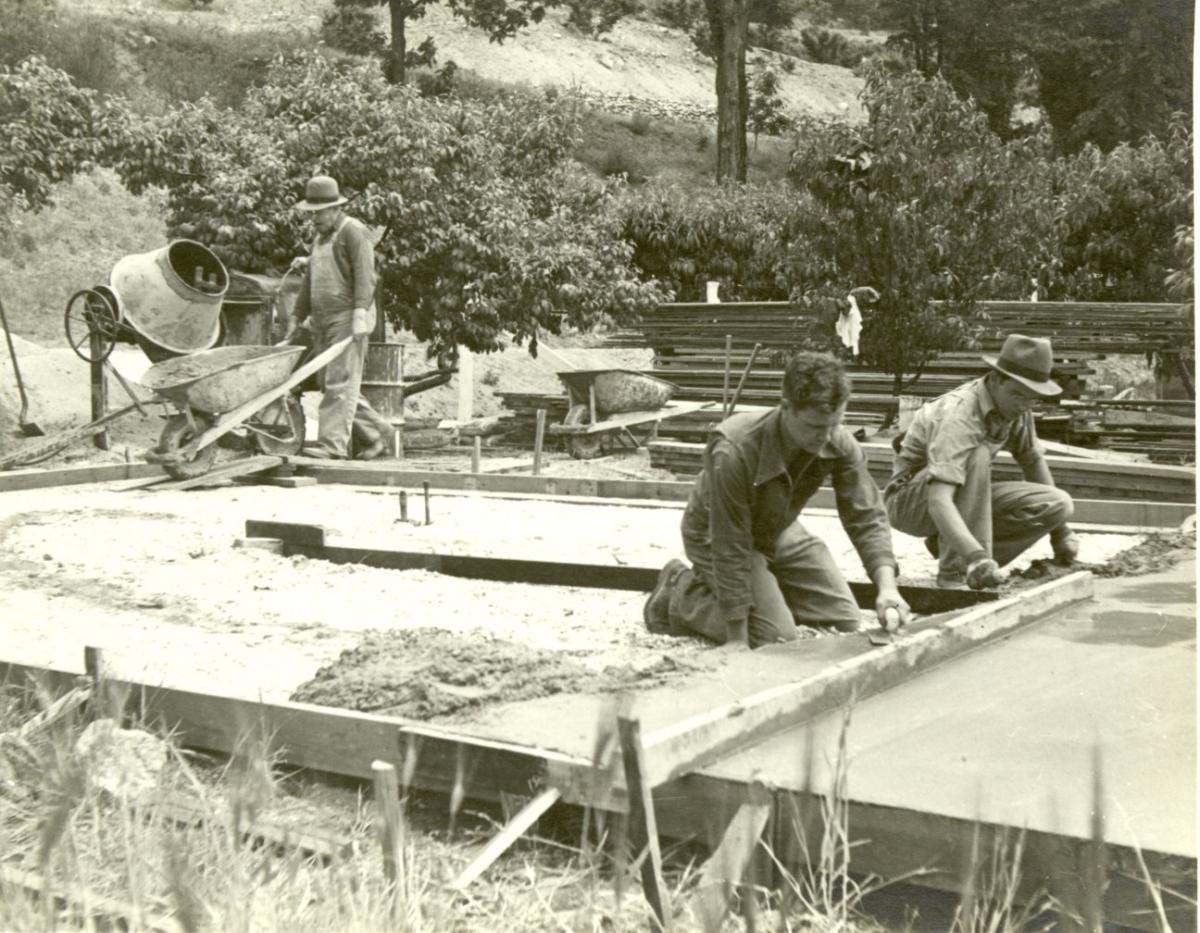 CPS Camp No. 79, Utah State Hospital, Provo Utah.Pouring concrete for hen houses.Digital image, Photo #122 Box 2, Folder 10. MCC Photogrpahs, Civilian Public Service, 1941-1947. IX-13-2.2. Mennonite Central Committee Photo Archive
CPS Camp No. 79, Utah State Hospital, Provo Utah.Pouring concrete for hen houses.Digital image, Photo #122 Box 2, Folder 10. MCC Photogrpahs, Civilian Public Service, 1941-1947. IX-13-2.2. Mennonite Central Committee Photo Archive -
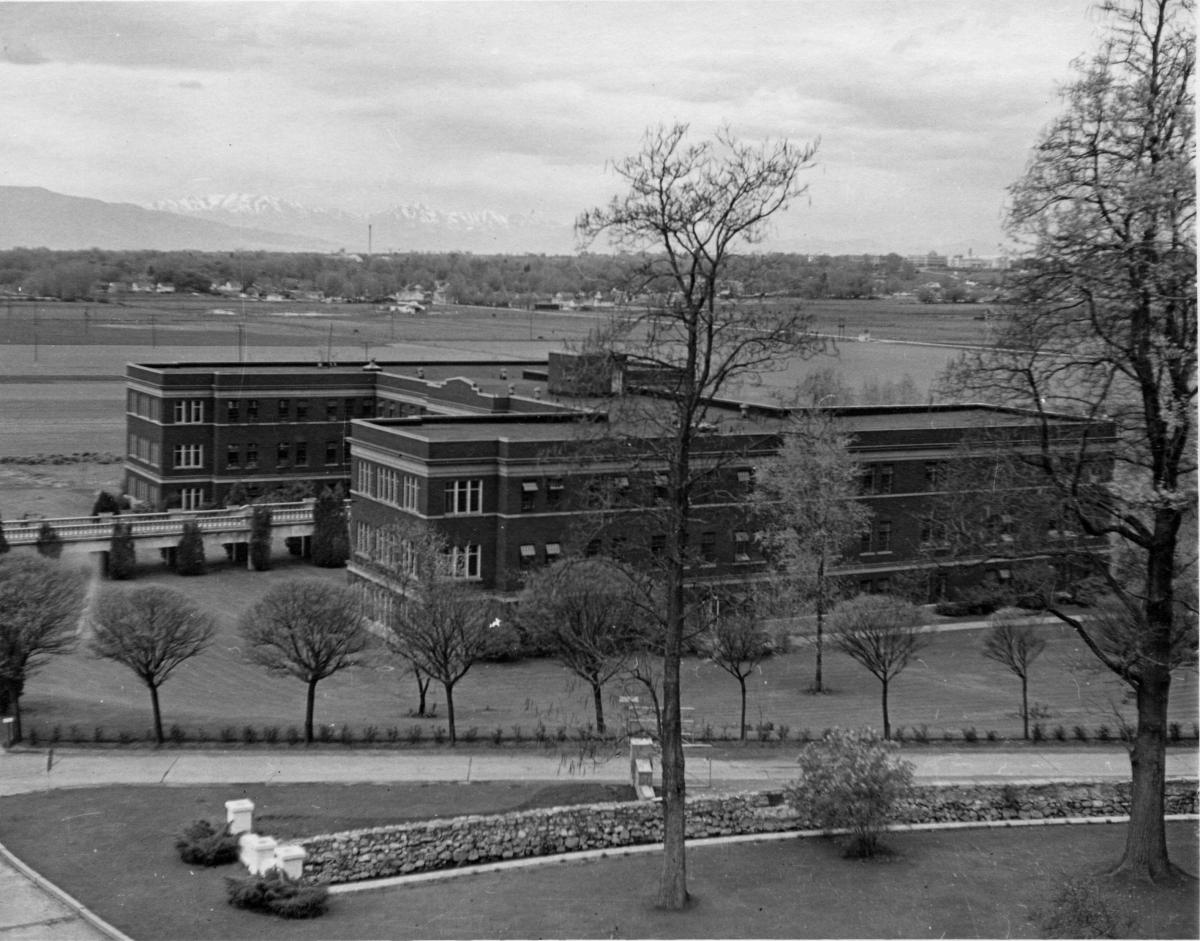 CPS Camp No. 79Civilian Public Service unit #79, Utah State Hospital; "One of the main buildings made up only of men's wards"Digital image at Mennonite Church USA Archives, North Newton, Kansasca. 1945
CPS Camp No. 79Civilian Public Service unit #79, Utah State Hospital; "One of the main buildings made up only of men's wards"Digital image at Mennonite Church USA Archives, North Newton, Kansasca. 1945 -
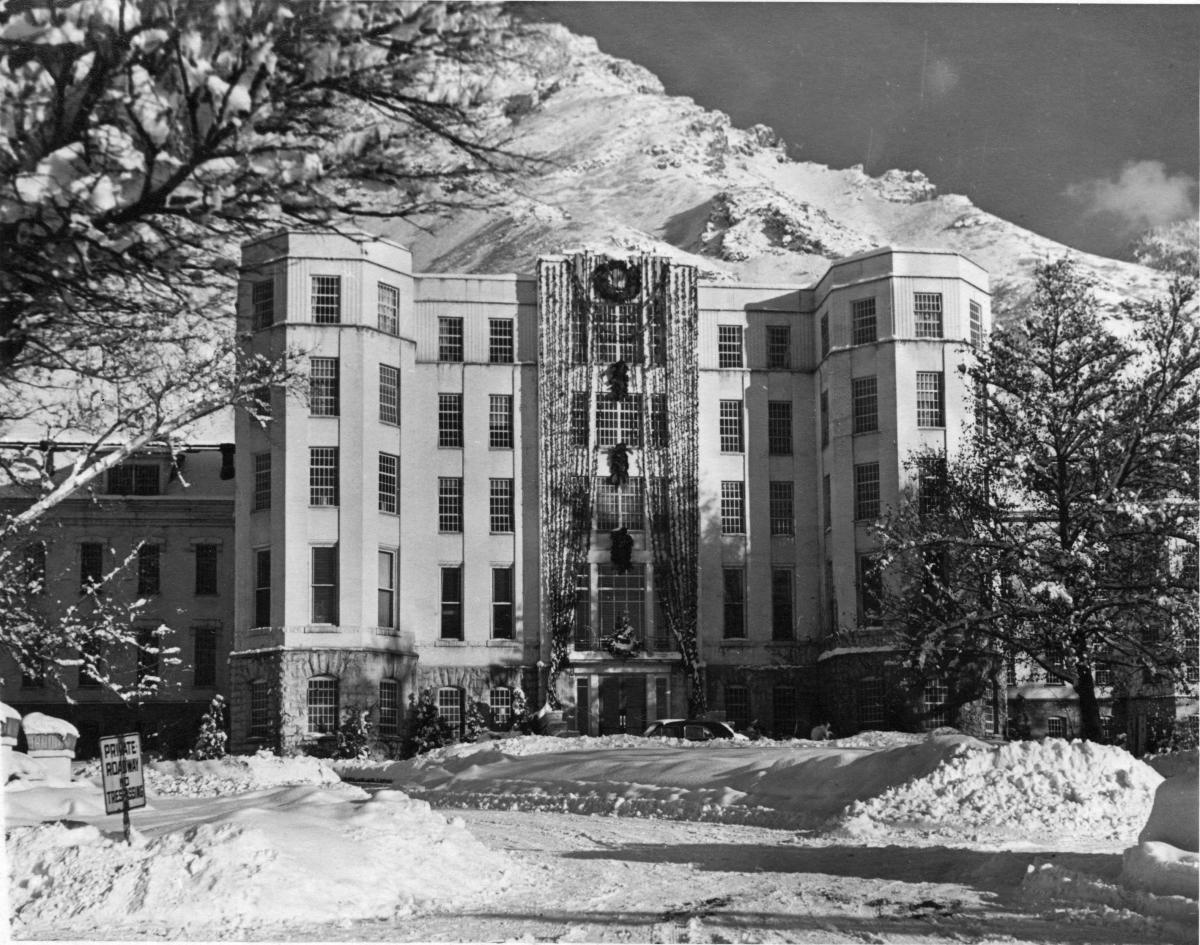 CPS Camp No. 79Civilian Public Service unit #79, Utah State Hospital; "The Admin. Bldg. with the Christmas decorations; in the foreground you see some of our snow."Digital image at Mennonite Church USA Archives, North Newton, Kansasca. 1945
CPS Camp No. 79Civilian Public Service unit #79, Utah State Hospital; "The Admin. Bldg. with the Christmas decorations; in the foreground you see some of our snow."Digital image at Mennonite Church USA Archives, North Newton, Kansasca. 1945 -
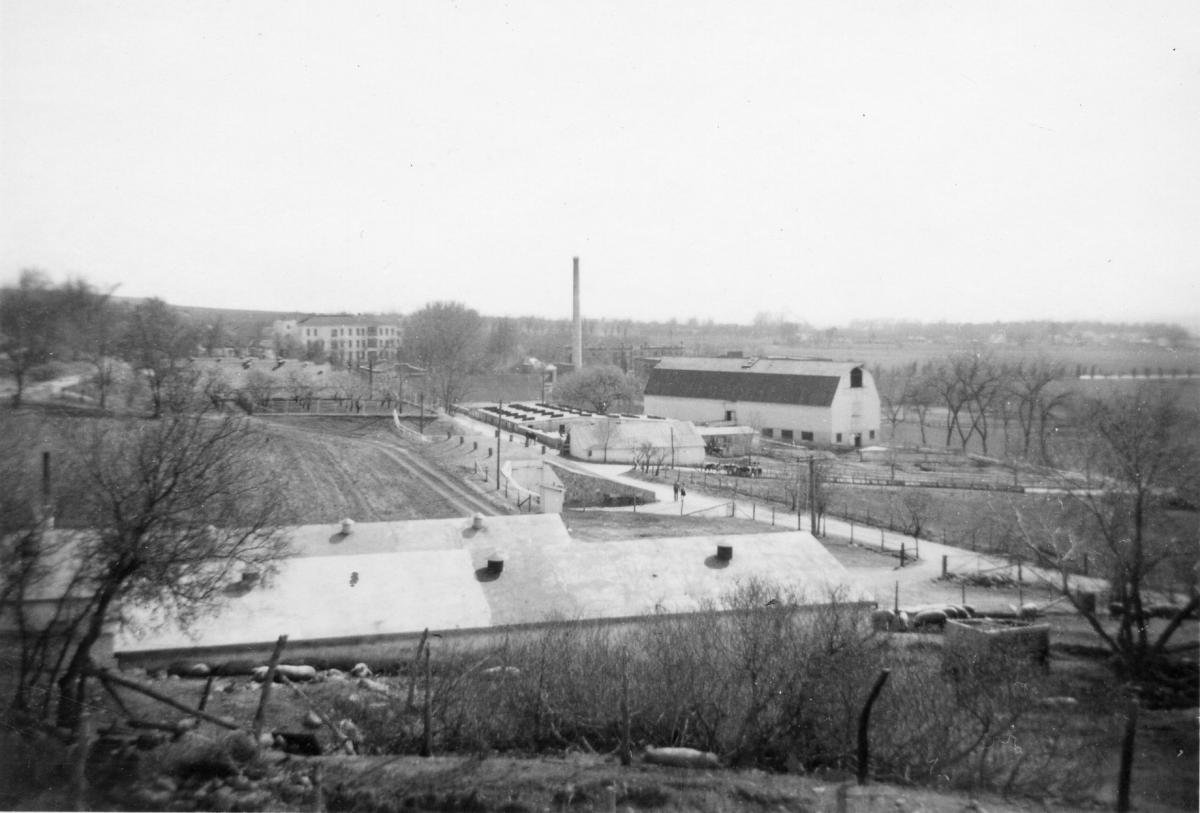 CPS Camp No. 79Civilian Public Service unit #79, Utah State Hospital; "View of hospital grounds; agricultural bldgs in foreground; admin. bldg in background."Digital image at Mennonite Church USA Archives, North Newton, Kansasca. 1945
CPS Camp No. 79Civilian Public Service unit #79, Utah State Hospital; "View of hospital grounds; agricultural bldgs in foreground; admin. bldg in background."Digital image at Mennonite Church USA Archives, North Newton, Kansasca. 1945 -
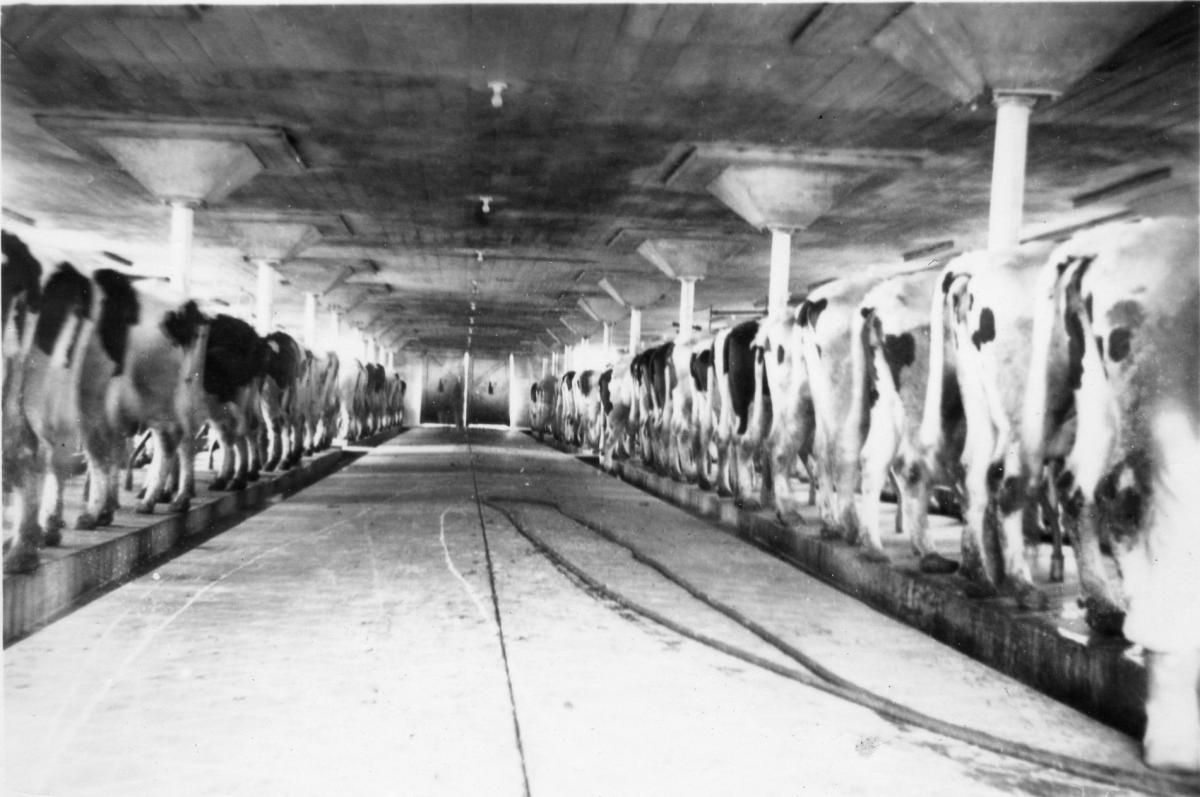 CPS Camp No. 79Civilian Public Service unit #79, Utah State Hospital; "The hospital dairy cows in barn; a C. O. is in charge of one milking daily"Digital image at Mennonite Church USA Archives, North Newton, Kansasca. 1945
CPS Camp No. 79Civilian Public Service unit #79, Utah State Hospital; "The hospital dairy cows in barn; a C. O. is in charge of one milking daily"Digital image at Mennonite Church USA Archives, North Newton, Kansasca. 1945 -
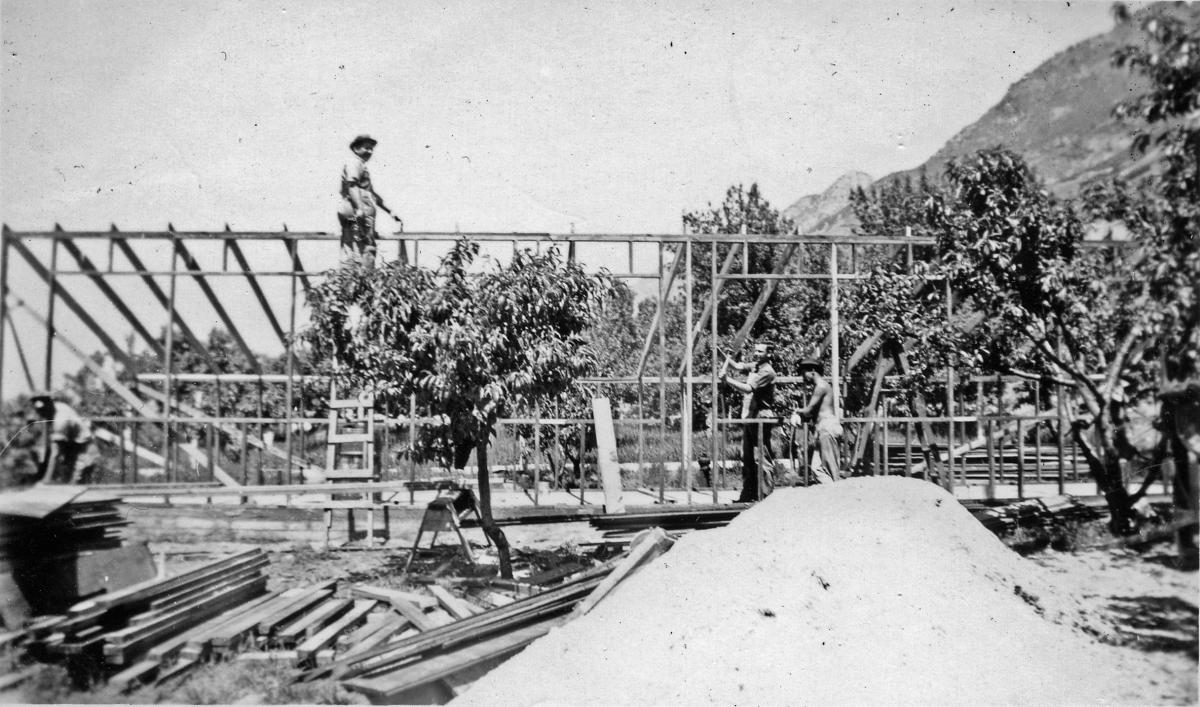 CPS Camp No. 79Civilian Public Service unit #79, Utah State Hospital; "C. O.'s constructing a hen house for the hospital."Digital image at Mennonite Church USA Archives, North Newton, Kansasca. 1945
CPS Camp No. 79Civilian Public Service unit #79, Utah State Hospital; "C. O.'s constructing a hen house for the hospital."Digital image at Mennonite Church USA Archives, North Newton, Kansasca. 1945 -
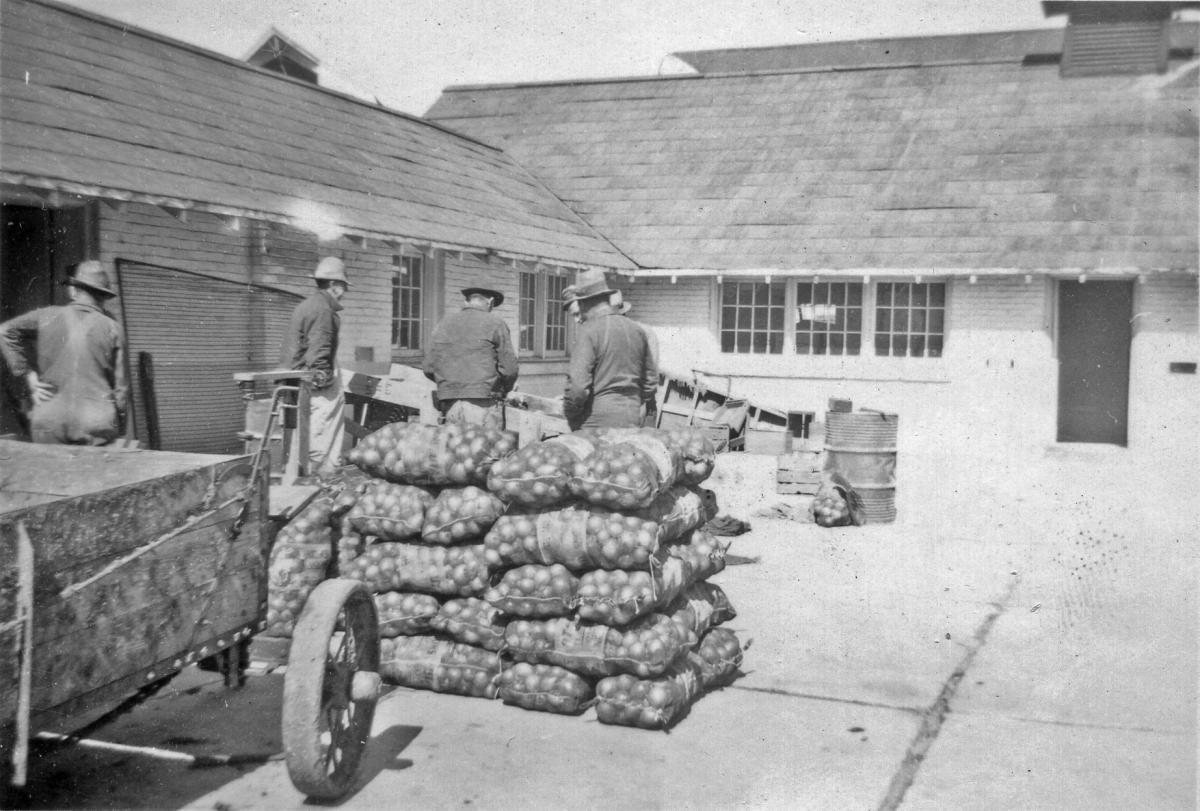 CPS Camp No. 79Civilian Public Service unit #79, Utah State Hospital; "C. O.'s working with patients grading and sacking onions for marking"Digital image at Mennonite Church USA Archives, North Newton, Kansasca. 1945
CPS Camp No. 79Civilian Public Service unit #79, Utah State Hospital; "C. O.'s working with patients grading and sacking onions for marking"Digital image at Mennonite Church USA Archives, North Newton, Kansasca. 1945 -
 CPS Camp No. 79, Arthur JostCivilian Public Service unit #79, Utah State Hospital; "Unit leader, Arthur Jost, at work in the office"Digital image at Mennonite Church USA Archives, North Newton, Kansasca. 1945
CPS Camp No. 79, Arthur JostCivilian Public Service unit #79, Utah State Hospital; "Unit leader, Arthur Jost, at work in the office"Digital image at Mennonite Church USA Archives, North Newton, Kansasca. 1945 -
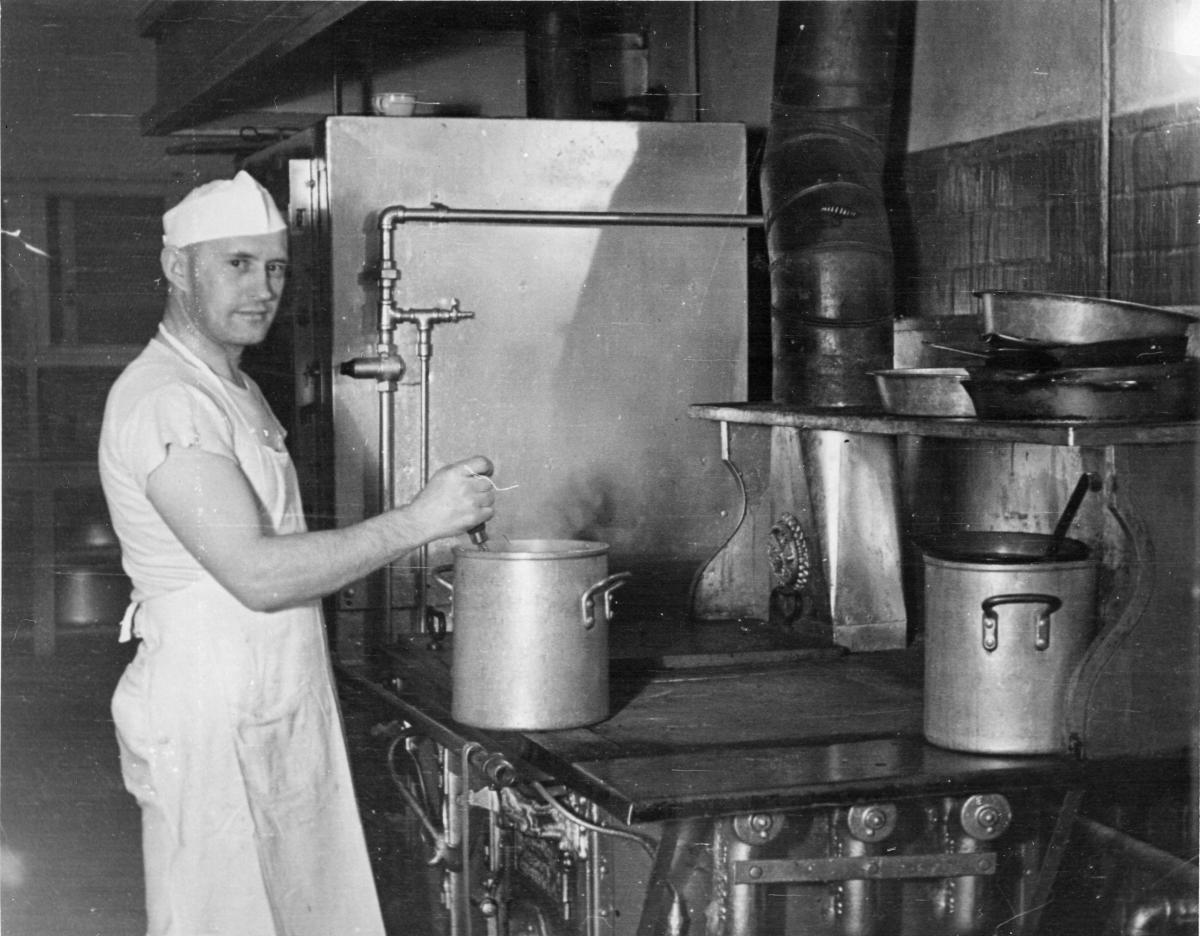 CPS Camp No. 79Civilian Public Service unit #79, Utah State Hospital; "Harold Oswald, a C. O. who has cooked for the hospital since the unit is here"Digital image at Mennonite Church USA Archives, North Newton, Kansasca. 1945
CPS Camp No. 79Civilian Public Service unit #79, Utah State Hospital; "Harold Oswald, a C. O. who has cooked for the hospital since the unit is here"Digital image at Mennonite Church USA Archives, North Newton, Kansasca. 1945 -
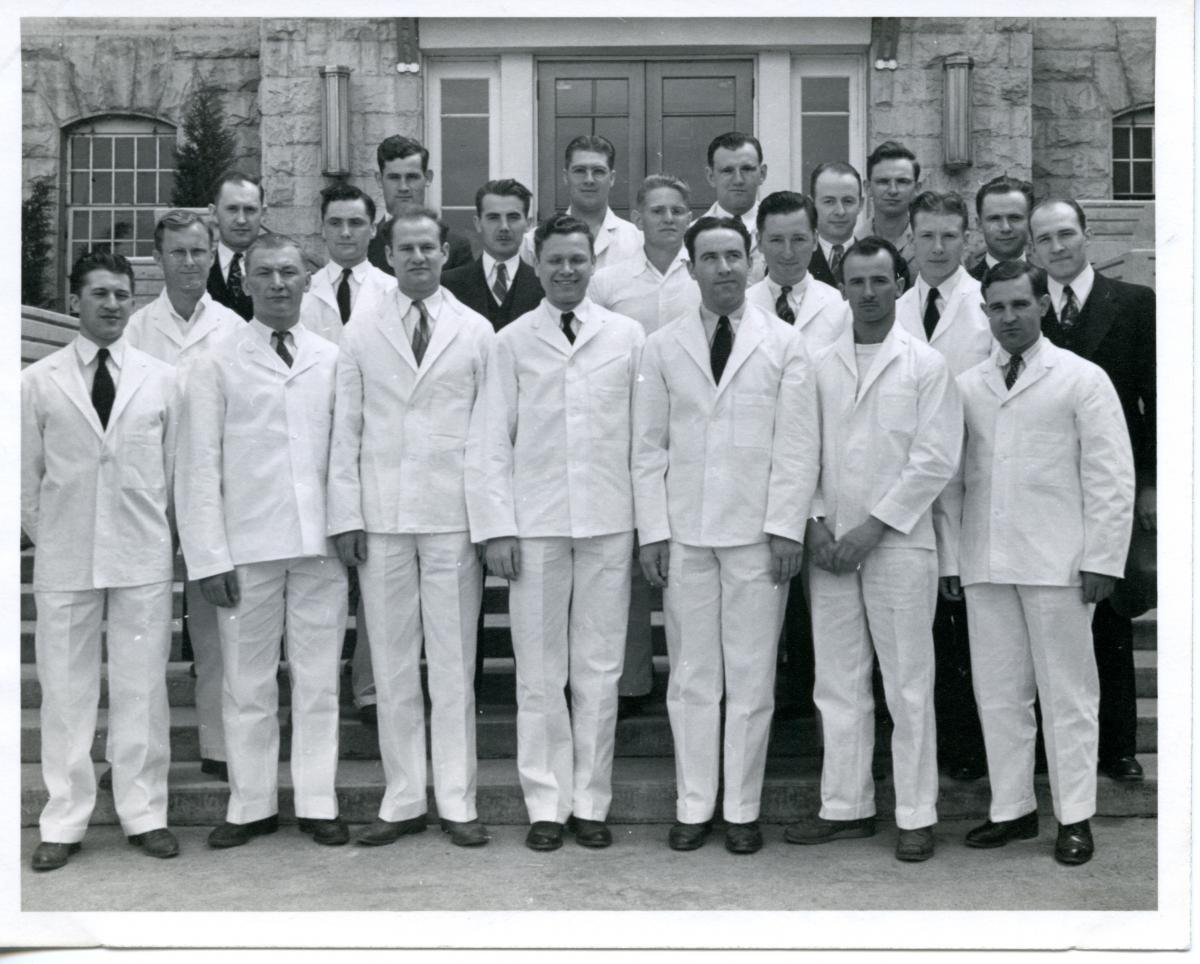 Camp 79 Unit Members21 of the original unit members. Front row: l-4, Sam Yoder, Pete Schmidt,* John Ewert,* Earl Gordon, Titus Martin, Eldon Morse,* Kenneth Miller, Second row: l-r, Herbert Welch, David Anderson, Walter Fast, Alvin Troyer, Ezra Miller, Moses Yoder,* Elvett Brown,* (unit leader until April 1, 1944), Back row: l-r, Harold Oswald, Ernest Pankratz, Eddie Kauffman, Erwin Buller,* Henry Kroeker, Joe Schrock, Arnold Claassen *have left unit for various reasons.Mennonite Central Committee Archival Photo
Camp 79 Unit Members21 of the original unit members. Front row: l-4, Sam Yoder, Pete Schmidt,* John Ewert,* Earl Gordon, Titus Martin, Eldon Morse,* Kenneth Miller, Second row: l-r, Herbert Welch, David Anderson, Walter Fast, Alvin Troyer, Ezra Miller, Moses Yoder,* Elvett Brown,* (unit leader until April 1, 1944), Back row: l-r, Harold Oswald, Ernest Pankratz, Eddie Kauffman, Erwin Buller,* Henry Kroeker, Joe Schrock, Arnold Claassen *have left unit for various reasons.Mennonite Central Committee Archival Photo
-

-
 ca. 1945
ca. 1945 -
 ca. 1945
ca. 1945 -
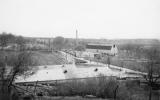 ca. 1945
ca. 1945 -
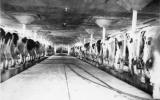 ca. 1945
ca. 1945 -
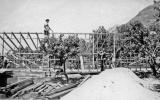 ca. 1945
ca. 1945 -
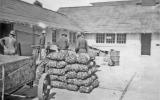 ca. 1945
ca. 1945 -
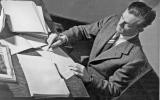 ca. 1945
ca. 1945 -
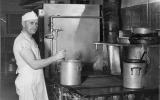 ca. 1945
ca. 1945 -
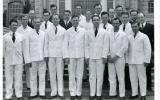
CPS Unit No. 79, a Mental Hospital unit at Utah State Hospital in Provo, Utah operated by Mennonite Central Committee, opened in March 1943 and closed in April 1946. The men worked in a variety of roles in the hospital.
Utah State Hospital in Provo, Utah was opened in 1885 as the Territorial Insane Asylum. From the beginning, its purpose was to treat the mentally ill “and to return them to a normal level of functioning.” In the early days, and it was little more than a human warehouse. By 1955 the population had grown to over fifteen hundred patients.
Directors: Elvett Brown, Arthur Jost, Harvey Goering
Twenty-five men served in this unit; a large majority of them were married.
The men worked in a variety of roles at the hospital, including ward attendant and filled in to cover staff shortages in a number of assignments.
The wives of COs were accepted in the community and found jobs there.
The unit met on Wednesday evenings to discuss the Sunday school lesson. Both the men and their wives sang in choirs, participated in Christian Endeavor, and taught in summer Bible school.
Some of the men earned course credit at Brigham Young University.
Samuel L. Yoder some fifty years later reflected on his time at Utah State Hospital.
Twenty COs settled into rather comfortable living quarters and for the first time since leaving home we were on the payroll, $15 a month, $7.50 coming every two weeks.
What did I know coming from the community I did [Amish] about schizophrenia, manic depression, involutional melancholia? Crazy was something we did not know. The odd ones as I was growing up were cared for in the home and by the community. The hospital staff did much to orient us to our task.
After an assortment of fill-in jobs I was assigned to the insulin and electric shock unit. This was a job I enjoyed. It provide excellent introduction to an understanding of mental illness.
. . . My experience in three mental hospitals in a small way was part of the fabric that laid the foundation for our own Mennonite Mental Health program.
(“Detour . . . Main Highway”: Our CPS Stories pp. 74-75)
For more information on this unit and other mental health and training school units, see Melvin Gingerich, Service for Peace: A History of Mennonite Civilian Public Service. Akron, PA: Mennonite Central Committee printed by Herald Press, Scottdale, PA 1949, Chapter XVI, pp. 213-251.
For more information on women COs see Rachel Waltner Goossen, Women Against the Good War: Conscientious Objection and Gender on the American Home Front, 1941-47. Chapel Hill, NC: The University of North Carolina Press, 1997.
For personal stories of CPS men, see Peace Committee and Seniors for Peace Coordinating Committee of the College Mennonite Church of Goshen, Indiana, “Detour . . . Main Highway”: Our CPS Stories. Nappanee, IN: Evangel Press, 1995, 2000.
See also Alex Sareyan, The Turning Point: How Persons of Conscience Brought About Major Change in the Care of America’s Mentally Ill. Scottdale, PA: Herald Press, 1994.
Swarthmore College Peace Collection, Camp periodicals database.
For more in depth treatment of the mental health and training school units, see Steven J. Taylor, Acts of Conscience: World War II, Mental Institutions, and Religious Objectors. Syracuse, NY: Syracuse University Press, 2009.
http://www.ush.utah.gov/history.htm accessed April 6, 2011.